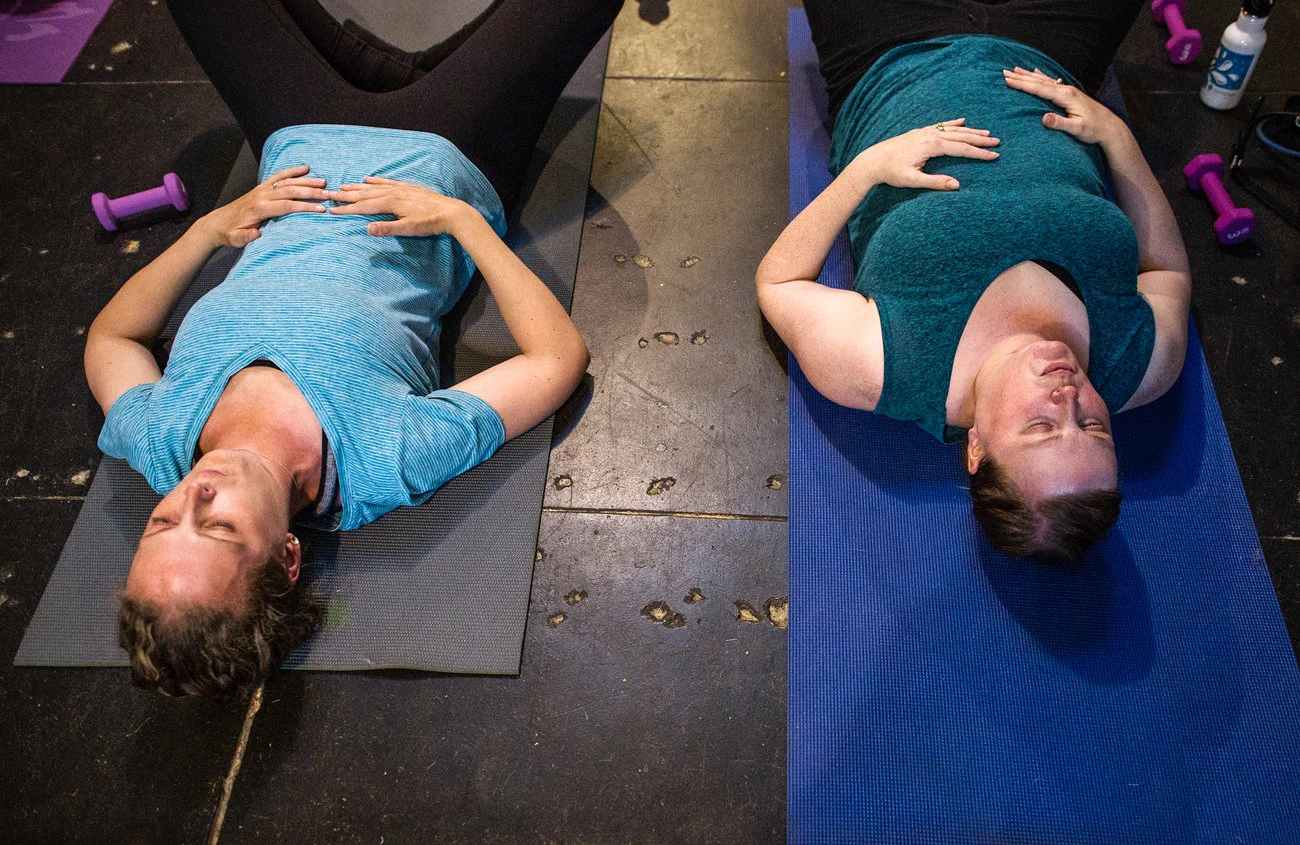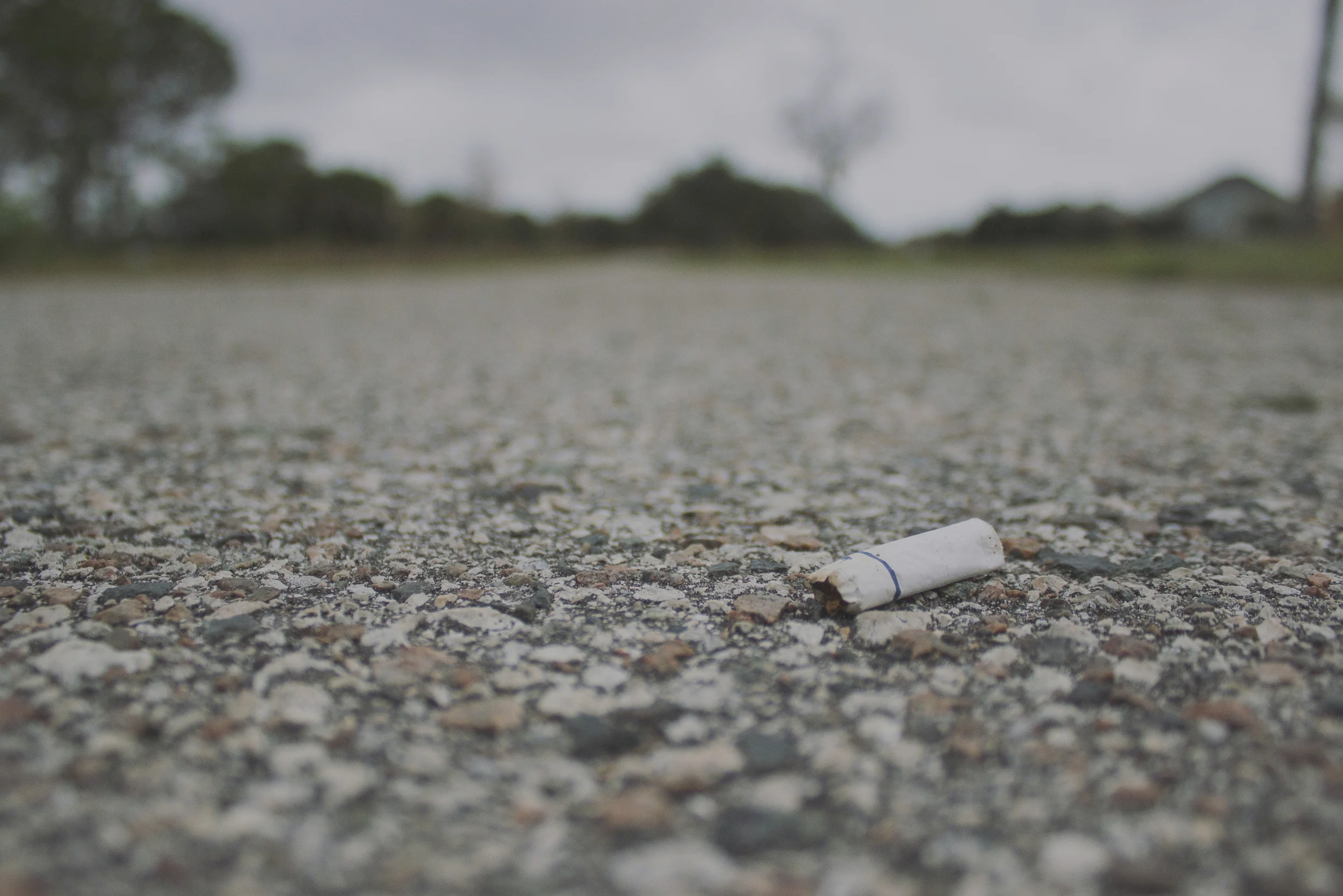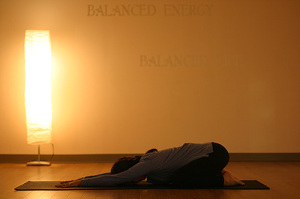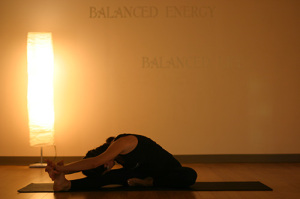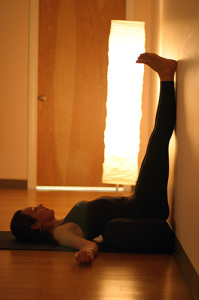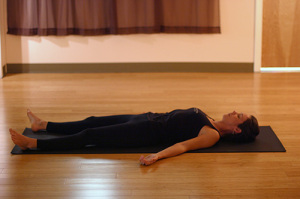Diastasis recti is the term used to describe the separation of the left and right sides of the abdominal muscles. The right and left halves of the rectus abdominus are connected by a fascial structure called the linea alba which can tear during pregnancy.
Why We Integrate
Does Smoking Increase Pain while Recovering from Surgery?
Yoga Poses for Plane Travel
What to Expect from the Pelvic Floor in Pregnancy & Post-partum
Is your Baby Breech?
Spring Cleaning Yoga Sequence
Goodbye winter, hello spring! The warmth of the sun on our skin has been long over due however transitioning into the warmer months isn't always a walk in the flower emerging park. Here are 5 yoga poses to clear out those winter blues and ready your body and mind for the warmer months in front of us!
Injury Treatment: Ice v. Heat
Energizing Yoga Sequence
How Acupuncture Can Reduce Your Pain Medication
For some time now I have been practicing Traditional Chinese Medicine. Many times I wondered what the greatest impact I could possibly make as a Licensed Acupuncturist in the State of Maine. Katie Thomas’ article in The New York Times, Patients Prescribed Narcotic Painkillers Use More of Them for Longer, Study Finds, brought that need to a crisp reality. Maine was #1 in the country for Opiate pain medication prescribing three years ago and Ms. Thomas’ article gave stunning facts of what those prescriptions make possible in the lives of Mainers. In The Times article, it is said that nearly half of the people who used their pain med prescription for thirty days are still using their meds three years later. Conversely, my fifteen years of experience with reducing pain, few see me in terms of years and acupuncture is not habit forming. Prescription med overdose is the leading accidental cause of death with 16,000 deaths nationwide in 2012. In chronic situations, one third of those prescribed pain meds had concurrent prescriptions for anti-anxiety drugs & muscle relaxants. If susceptible, addiction seems likely for those just trying to get beyond their injury or surgery. Other tools to reduce pain medicine prescriptions must be used.
America’s National Institute for Health support the use of acupuncture for the relief of pain. At Jade Integrated Health we ask doctors directly if there is a way to integrate the use of acupuncture to reduce pain and minimize the use of potentially addictive meds. Much of the time the visits are from folks in the chronic pain med use category and have additional sleep problems, anxiety or depression. All those additional symptoms are treatable with acupuncture, often times providing an opportunity to reduce or eliminate prescriptions for those additional imbalances.
Our dream here at Jade is providing Physicians a choice for their patients chronic or acute pain. We offer a well balance array of services provided by expert level clinicians. Pain will always be a part of living and currently medications are the most common solution used. When offered that solution please consider potential consequence for addiction as mentioned above. Ask your Medical Provider for non-addictive choices like Acupuncture, Yoga, Massage and Meditation.
John Charlebois
John Charlebois is a licensed acupuncturist specializing in traditional Chinese medicine. He graduated Magna Cum Laude with a BA of Science and Rehabilitation Administration from Springfield College in Massachusetts. John then attained his Master of Science in Oriental Medicine, Traditional Chinese Medicine, Tui Na AOBTA Certification, National Certification in Herbology at the Academy of Oriental Medicine in Austin, Texas.
How to Set Up an Ergonomic Workstation
Rise and Shine - Morning Yoga Sequence
Jade's Favorite Winter Activities
You Are Not A Number
How do you find the right doctor? Physical therapist? Acupuncturist? Most patients are finding time with their healthcare providers shrinking. The time spent with your healthcare provider is important so that all your questions and concerns are heard, not to mention thoughtful discussion about the best treatment or wellness plan for you. Here are some questions that you may want to ask a potential health care provider:
- “Each time I have an appointment, will I be see the same doctor/therapist/acupuncturist?”
- “How long will my appointments last?
- “If I call with questions, can I speak directly with my provider?”
- “Do you have a particular specialty?”
- “How long have you been practicing?”
- “What tools do you rely on most when treating your patients?”
As a physical therapist, I see how healthcare time is spent, both as a patient and a provider. From my perspective, not having enough time with patients leads to sub-standard care. I feel fortunate to be a part of a model that is truly patient centered and really meets the quality standards that many espouse, but do not actually deliver. I encourage you all to look closely and make sure that you are not a “number” in your healthcare provider's office. The greatest compliments we receive at Jade, from both employees and patients, is that they feel listened to, are in a cheerful office, receive high quality care and are grateful for the TIME we spend with them.
This is how Jade answers the above questions:
- Each physical therapy appointment will last 50-60 minutes, acupuncture 90 minutes, and you will be treated by a licensed physical therapist or licensed acupuncturist every time. We do not have physical therapy aides or athletic trainers providing treatment. Your treatment will occur in privacy.
- If you have questions and call us, our receptionist will answer the phone - we’d be surprised if it wasn’t a pleasant greeting! If you ask to speak with one of us about your acupuncture, physical therapy or yoga therapy, they will make sure that our acupuncturist or physical therapists return your call.
- We each have different areas of specialty and are passionate about providing care in the areas of women’s health, orthopedic injuries, sports injuries, ergonomics and post-operative rehabilitation.
- Jade Integrated Health was established in 2001 and all of our providers have at least 10 years of clinical experience.
- Our tools are wide and varied - acupuncture, dry needling, myofascial release, therapeutic exercise, pool therapy, patient education, Chinese herbal formulation and thermal modalities are most commonly used.
We’re sure that you have questions of your own, so we look forward to spending time answering them!
Give us a call today for a 30 Minute Free Consultation! (207) 773-5778
Nancy Charlebois
Nancy Charlebois is a licensed physical therapist and massage therapist. She graduated in 1996 from Springfield College with her Master’s Degree in Physical Therapy. Nancy has worked in a variety of treatment settings, from a neonatal intensive care unit to nursing homes during her 14 year career. Since moving to Maine, she has developed a strong outpatient orthopedic focus working with patients experiencing pain. She also specializes in women’s health physical therapy.
7 Yoga Poses to Detox and Cleanse Your Body in 2015
A New Year and Refined You!
Inhale new, exhale old! 2015 is here and it is time to cleanse yourself of anything that did not serve you in 2014 and welcome in new opportunities in the new year.
I have recently seen numerous articles about creating "a new you" in the new year, and started wondering: do we always need to have this feeling of starting over from square one to find balance and happiness in our lives? Aren't there things we like about ourselves and our lives that we have cultivated over the years?
In yoga class the other day, the teacher invited us to welcome a "refined you" in this year. A Refined You. I swished it around in my mind a few times and liked how it sounded. A Refined You allows you to reflect on aspects of your life that are not working and make steps towards changing them, while growing the facets of your life that are positive and working well.
I invite you to join me this new year in taking steps towards a Refined You and leave you with these 7 Yoga Poses to Detox & Cleanse Your Body to help you get started!
Namaste!
1. Cat / Cow
Benefits: Massages the spine and belly organs.
Instruction: Starting from table top, inhale press into the hands as you arch the back drawing the chest forward while gazing straight ahead or toward the ceiling. Exhale as you round the back, spreading across the shoulder blades as you tuck the chin and tailbone.
2. Downward Facing Dog (Adho Muhka Svanasana)
Benefits: Numerous benefits including improving digestion, relieving headaches, insomnia, back pain, and fatigue.
Instructions: Starting at table top reach through the hands as you lift the hips back and towards the ceiling. Rotate the outer upper arms in as you spread across the shoulder blades and pull the belly into the spine. If the hamstrings are tight take the feet to the outer part of the mat.
3. Standing Wide Leg Forward Fold w/ Twist (Prasarita Padottanasana variation)
Benefits: Stimulates and massages the abdominal organs, improves and relieves digestion issues, as well as tones the abdominal wall.
Instruction: Step the feet 4-5 feet apart, feet parallel with toes slightly angled in. Bring the hands to the hips elbows pointing back. Inhale, lift the chest, exhale forward fold. Bring the hands underneath the shoulders. Walk the left hand to the center as you draw the right hand to the right hip. Slowly begin to revolve open to the right, twisting from the belly. Take a few breaths here and if comfortable, reach the right hand towards the ceiling, fingers spread. Switch Sides.
4. Seated Twist (Marichyasana C)
Benefits: Tones the liver and spleen and stimulates the intestines.
Instructions: Draw the right knee in. Reach the right hand to the floor behind you as you lift the left hand toward the ceiling and hook the elbow on the outside of the knee. Inhale to find length in the spine, exhale to twist towards the back of the room. Take a bind (shown below) for a more advanced option if you can maintain length in the spine and the breath does not become staggered.
5. Shoulder Stand (Salamba Sarvangasana)
Benefits: Cooling, calming and soothing to the nervous system. Helps to balance the functioning of the endocrine system. Regulates elimination.
Alternate postures: Legs up the wall, Supported bridge with legs extended towards ceiling.
Instructions: Start by laying down on the floor. Draw the legs back over head coming into plow pose. Pressing into the low back with the hands slowly bring one leg at a time overhead. Reach the toes towards the ceiling as you lift the knee caps and draw the belly towards the spine. Gaze towards the toes and avoid looking side to side. Stay for 10 deep breaths. Lower to plow before rolling out back to a supine position.
6. Supine Spinal Twist "Stomach Churning Pose" (Jathara Parivartanasana)
Benefits: Stimulates large intestine and improves elimination. Tones the core and releases muscles in the back, spine and shoulders.
Instructions: Start laying down on the back and lift the knees up to 90 degrees. Draw the arms out to the sides to a T and lower the legs to the right. Allow the head to gently fall the the left as you draw the left shoulder down. To deepen the pose extend the legs to straight. Switch sides.

7. Savasana
Benefits: Calms the mind and relaxes the body. Also helps relieve stress, mild depression, headache, fatigue, and insomnia.
Instructions: Spread your feet a little wider than hip distance apart and allow the feet to splay open. Slide your arms a few inches from your body, palms facing up. Close your eyes and allow your breath to be soft and natural. Slowly begin to work your attention up your body, relaxing each muscle from the tips of your toes all the way to the top of your head, ultimately allowing your body to slowly melt into the floor. Stay for 5-10 minutes.
Carolyn is a RYT (Registered Yoga Teacher) at Jade Integrated Health. Her classes focus on building strength and flexibility through the fluidity of breath and movement as well as the instruction of proper alignment.
New Mom & Baby Yoga Teacher! Meet Abby!
When was your very first introduction to yoga and what drew you to it?
I started practicing yoga as a college student while pursuing my degree in Philosophy and Religion at Wheaton College in Massachusetts. As a college student, I found myself fascinated with Eastern Religion in particular. I also had many opportunities to study at a local Zen monastery, which is where I first practiced meditation and yoga. At first I liked meditation better than yoga, but over time things evened out.
How long have you been teaching and what certifications do you have?
I finished my 200-hour Vinyasa training in the Spring of 2013, and completed my Pre- and Post-Natal certifications that summer. After my son Cooper’s birth in the fall, I committed to teaching yoga full time, leaving behind my job as a preschool teacher for children with special needs. Since then, I have taken additional trainings in Baby and Me and Children’s Yoga.
What do you love most about teaching yoga?
I work with a lot of different kinds of people, my students range from 3 weeks to 75 years old- and yoga has something for everyone, regardless of age. It can be energizing or relaxing, stretching or strengthening. At different times in our lives, sometimes even our days, we need different aspects of the practice, and I really love being able to cater each practice to the needs of my students.
What exactly is Mom & Baby Yoga?
Mom & Baby Yoga is all about building connections. Connecting new moms with other moms is hugely important in those first months, not only for the emotional support and understanding, but also to ask questions and share ideas. Meanwhile, we sing songs, do exercises, and the bond with mothers and their new babies. And of course, it wouldn't be yoga without helping moms connect with themselves! Caring for one’s self is also crucial, and as we work with breathing, stretching, and gently re-toning muscles affected by pregnancy, Moms can do just that.
What can a new mommy expect from your classes?
I really like to give a lot of options in my classes, offering modifications to make things more nurturing, gentle, and comfortable for moms (regardless of their physical abilities), but also options to make things a little more challenging. I think one of the best things new Moms can do for themselves is to find ways to feel good about their bodies. Pregnancy and labor greatly impact the relationship women have with their bodies, and so I hope that all women who participate in my classes find a way to feel positive about that relationship. Part of that is nurturing and taking it easy when it's that kind of day, and pushing yourself when you feel up to it.
Why should a new mommy come to your Friday morning class?
I have always really liked the idea that these classes give women an opportunity to "find a tribe." Having a baby is hard work, and being in a room with other women who get it- like really, Get it- helps so much. Plus, the babies get to meet their first friends!! When I first had my son, I was surprised at how lonely life as a new mom could be. When I started going to Baby and Me classes, I found other women who could relate to that, which was really helpful. It was also a safe environment to ask questions, vent, and sometimes even laugh!
How to Balance your Winter Blues!
Traditional Chinese Medicine is a healthy guide for balance in anyone's life. Imbalances lead to disharmony in the body or emotions or perceptions. If allowed unchecked disharmony can become disease. Life exposes us to imbalanced conditions. Last week's 11 degree temperatures are a prime example of the kinds of extremes our pursuits of balance must overcome. The yin yang symbol is the fluid representation of extremes and their relationship to one another and ways to balance their existence.
If I wake and find it to be a cold (Yin) 11 degrees outside my desire for balance will compel me to seek fire (Yang). Conversely in July on a 98 degree day (Yang) I will wish to jump in the cool ocean surf (Yin) and will be refreshed. Balance is found in both occasions and the extremes of hypothermia or heat exhaustion are avoided. These two examples are very obvious physical situations with very linear solutions but human mental & emotional balance is not always so simple.
In a short time the longest night of the year will occur with the Winter Solstice. Daylight (Yang) will be at its lowest amount while darkness (Yin) will be at its greatest extreme. So this time of the year Yin is dominate in the form of cold, darkness, and a predominate tendency to seek the indoors that may isolate us a bit more from other people. Many become more sedentary (Yin, fat is Yin too) and the emotional/mental blahs begin to creep in. At this point the season seems to be living up to its reputation and balance seems to be far away.
Here are some very seasonal solutions to restore balance this time of year:
- Go to a party! Laughter, singing, conversation and Love are all strong Yang expressions if the heart in Traditional Chinese Medicine. The heart is the most yang organ in the body with Its constant beating, red color and tendency for passionate pursuits.
- Find recipes with cinnamon, ginger, clove and cook food in the form of soups and stews to be eaten hot.
- Lastly, strongly identify with what lights the fire inside your soul. Your imagination and creativity are crucial players for keeping a twinkle in your eyes.
Many holiday activities integrate many of the Yang items and situations that can bring balance in this most Yin of times. Contact me with your favorite Yang contribution to the season or any questions about balanced living.
 John Charlebois
John Charlebois
John Charlebois is a licensed acupuncturist specializing in traditional Chinese medicine. He graduated Magna Cum Laude with a BA of Science and Rehabilitation Administration from Springfield College in Massachusetts. John then attained his Master of Science in Oriental Medicine, Traditional Chinese Medicine, Tui Na AOBTA Certification, National Certification in Herbology at the Academy of Oriental Medicine in Austin, Texas.
5 Yoga Poses to Promote Sleep and Combat Insomnia
It's 1 a.m. and you are awake. Your mind is racing, your body can't seem to get comfortable and you have to wake up in 5 hours...sound familiar? Don't worry, you're not alone. Instead of staying in bed praying to every possible Hindu god you can recall for sleep to come, roll out your mat and practice these 5 calming yoga poses to help lull you back to sleep.
Cat/Cow
Come into table top position (hands and knees on the floor). Close your eyes. Inhale, arch your back as your head gently tilts upward towards the ceiling. Exhale, round your back, tucking your chin and pelvis as your spread across your shoulder blades. Repeat for 10 breaths.
Benefits: Gently massages the spine and belly organs.
Child's Pose (Balasana)
From table top, widen the knees and bring the toes together as you slowly lower the hips down towards the heals.* Stretch the arms out in front resting the elbows on the floor. Stay here for 1-3 minutes.
* For tight hips or sensitive knees, place a folded blanket behind the knees or a block between the feet.
Benefits: Calms the mind and helps relieve stress and fatigue.
Head to Knee Forward Bend (Janu Sirsasana)
Come to seated with both legs out in front. Draw your right knee in and fold open to the side. Place both hands on either side of the left leg. On your inhale, lift and twist the upper body towards the left foot, on your exhale; slowly fold forward at your hip joints. Stay here for 1-3 minutes and then switch sides.
* For tighter hamstring, come to seated on a blanket for this pose.
Benefits: Calms the mind and helps relieve mild depression, anxiety, fatigue, headache and menstrual discomfort.
Legs Up the Wall (Viparita Karani)
For this calming pose, you can flip around in bed and extend the legs up the wall, or find some empty wall space in your room. Come to seated on the floor with your knees in and your right side against the wall. On your next exhale, slowly slide the upper body to the floor pivoting the legs so they rest against the wall with the bottoms of the feet facing the ceiling (see image above). Sit bones should be against the wall (if comfortable). For added comfort under the hips, press the heels into the wall to lift the hips and place a blanket underneath. Stay here for 3-5 minutes.
Benefits: Calms the mind and eases anxiety and reduces stress.
Corpse Pose (Savasana)
If you're not there already, make your way back to your bed and lay down on your back. Spread your feet a little wider than hip distance apart and slide your arms a few inches from your body, palms facing up. Close your eyes and allow your breath to be soft and natural. Slowly begin to work your attention up your body, relaxing each muscle from the tips of your toes all the way to the top of your head, ultimately allowing your body to slowly melt into the bed. Stay for 5-10 minutes, or until you fall asleep.
Benefits: Calms the mind and relaxes the body. Also helps relieve stress, mild depression, headache, fatigue, and insomnia.
For added relaxation, here is a great Guided Yoga Nidra Audio from Yoga Journal to put on when you are finished with your poses and laying in Savasana.
What Your Food Cravings Really Mean
Food is to be enjoyed is a strong guideline around the world. Here in Portland Maine it is a rule. Enjoying tastes such as bitter, sweet, pungent, salty, or sour alone or in fantastic combinations are a reflection of good balance of the physical need for food and the mental/emotional pleasure eating brings. Blending flavors well has given us dishes like pad Thai, chili con carne, bugoki (Korean BBQ) and ratatouille to name a few. Cravings on the other hand pose a different situation. Traditional Chinese Medicine (TCM) considers cravings to indicate imbalances with each flavors corresponding organ system. Generally, craving sweet, salty, bitter, pungent or sour only gives a Licensed Acupuncturist one small piece of information when looking at the whole person. Strong cravings though provide the practitioner evidence of a greater imbalance. For centuries food therapy has been used to counteract patterns of imbalance. The basic implications in Traditional Chinese Medicine are as follows.
Craving sour has a great deal to do with the Liver(Gan) and Gaul Bladder(Dan) areas of influence. Clinically sour apples are used as part of an effective strategy to reduce the accumulation of silt and stones in the Gaul Bladder. Additionally, “sour minded” people are often treated for Liver disharmonies. The liver and Gaul Bladder are prone to either emotional or physical stagnations so craving sour is seen by the body to resolve the “stuckness”.
Pungent food cravings are associated with the Lungs and Large Intestine. TCM considers the lungs to be responsible for Immunity not only the absorption of air qi(oxygen) into the body. Pungency brings the force of defensive qi(imunity) to the surface therefore expelling the pathogen. This is consistent with the old notion break a sweat break a fever.
Craving Bitter tastes suggests to the TCM practitioner that some cardiovascular imbalances could be present. Further questions about heart health, blood pressure, healthy relationships with others and caffeine intake may be asked. Bitter cravings may also tell the acupuncturist of the digestive systems need for PH regulation or “cooling digestive heat”.
Sweet cravings are easily associated with Spleen/Pancreas and Stomach imbalances. Sugar/flower cravings are strong indicators that the job of the digestion and endocrine functions are insufficient to supply energy to the body. If blood glucose is not entering the cells the body will ask for more. Poor stress management is often a catalyst for digestive weakness and insulin inhibition from the stress hormone cortisol.
Salt cravings may indicate a need for greater focus on kidney and Urinary Bladder health. Fluid regulation and retention of salts may be compromised with poor renal performance. Balance of these substances is very important for health and with craving salt often this dynamic obviously needs treatment.
Stress often stimulates our cravings no matter what the flavor. Long ago stress was understood to be a pathogen and Traditional Chinese medicine continues to be an effective solution. Strong cravings are an indication of a deeper problem often there are other symptoms consistent with patterns of disease. Identifying and treating these patterns offer a solution safe to use without harmful side effects.
Portland Trails to Ale 10K
The 14th annual Portland Trails to Ale 10k takes place this September 22nd on the beautiful Eastern Promenade, and we here at Jade Integrated Health will be providing yoga and massage. This race gives runners the perfect opportunity to use the trails and walkways the local organization, Portland Trails, works so hard to maintain throughout the year. In addition to offering beautiful scenery, participants are invited to attend the ever popular after race party featuring pizza from Portland Pie, Co beer from Shipyard Brewing, and massages and yoga sessions offered by none other than yours truly, Jade Integrated Health.
In addition to the sponsors listed above, the following individuals will also be present and playing a big role in the festivities for participants….
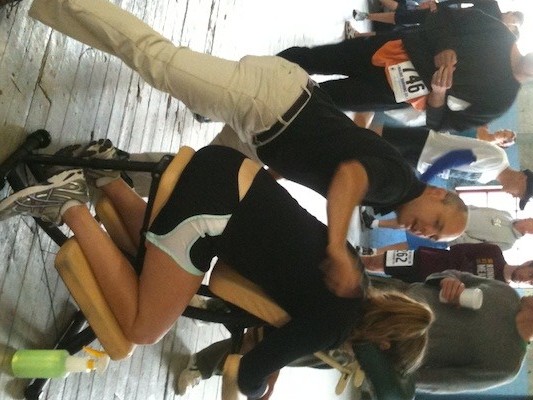 Poland Spring
Poland Spring- SMRT
- Whole Foods
- Martin’s Point Healthcare
- The Maine Running Company
- DJ David Skye
- Oakhurst Dairy
- The Hilton Garden Inn/Portland Downtown Waterfront
- City of Portland
If you are participating in this year’s event don’t forget to stop by registration for our pre-race yoga sessions that will be running up until the start of the race. We also will be offering post race cool down yoga sessions followed by massages for racers who participate in our post race cool down program. We are so excited to offer these services again this year and hope to see everyone out enjoying the beautiful Maine scenery on the 22nd of this month!
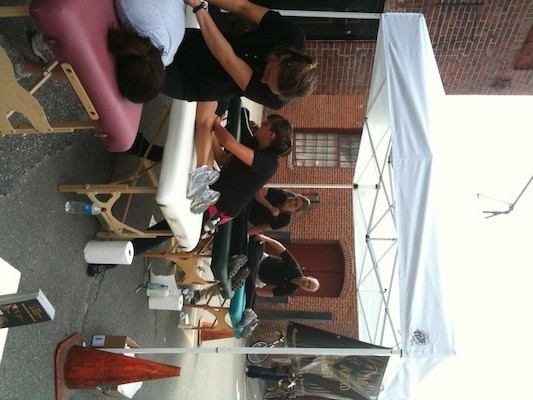 Jade Integrated Health
Jade Integrated Health
For more information on this year’s event see the following sites!
